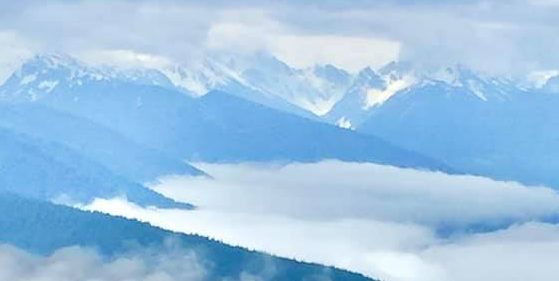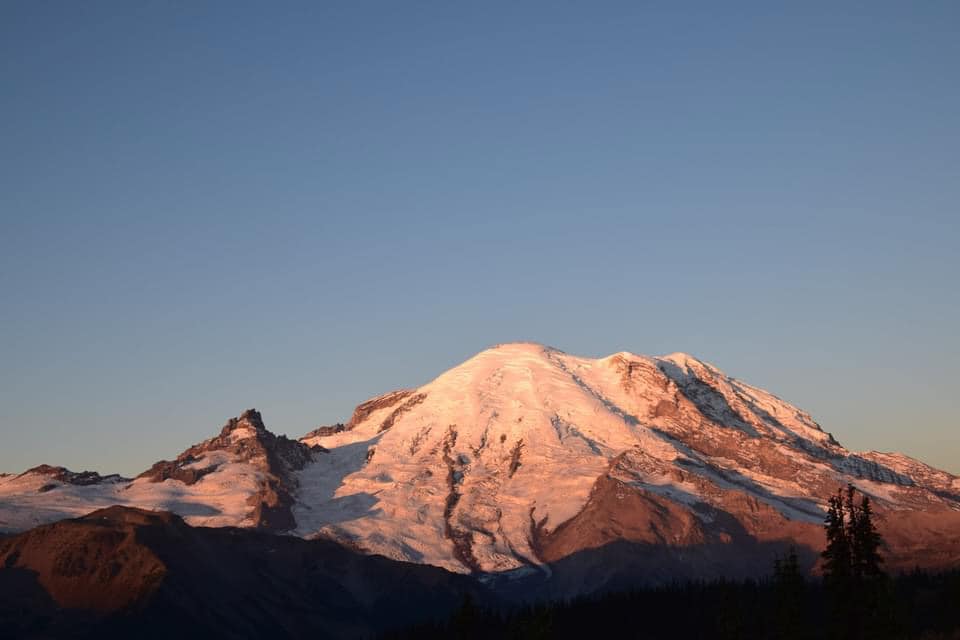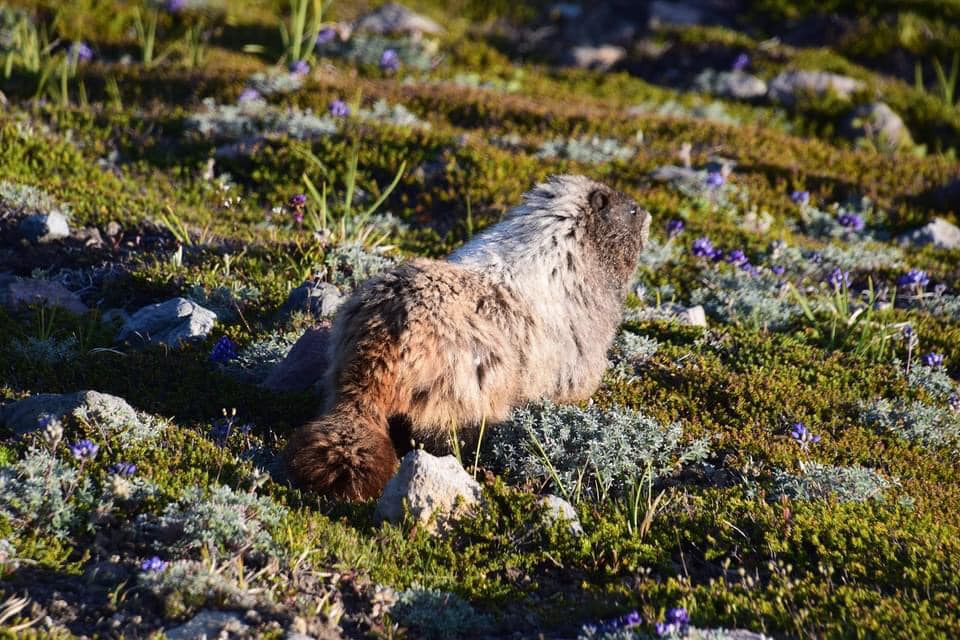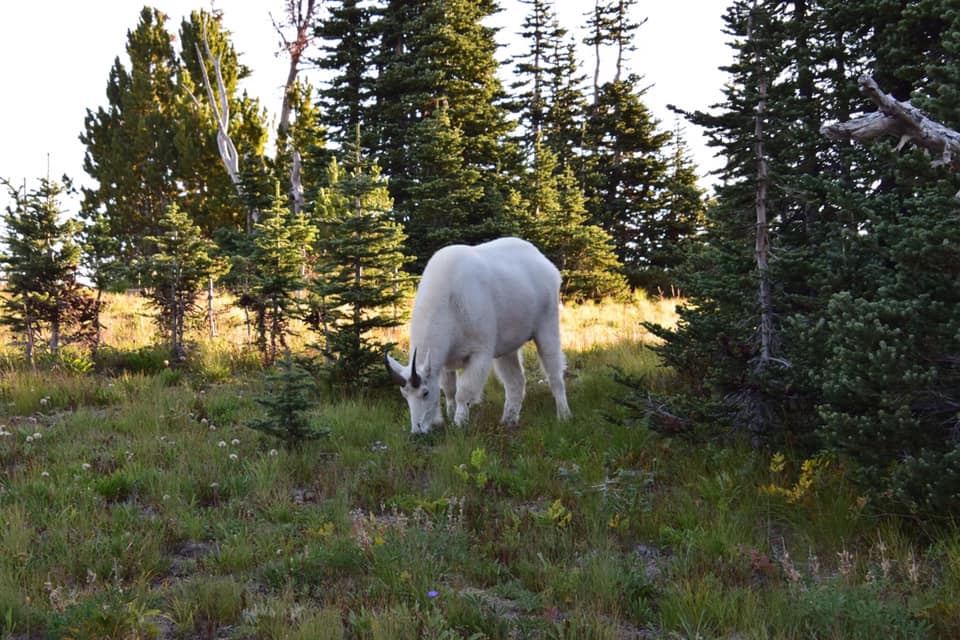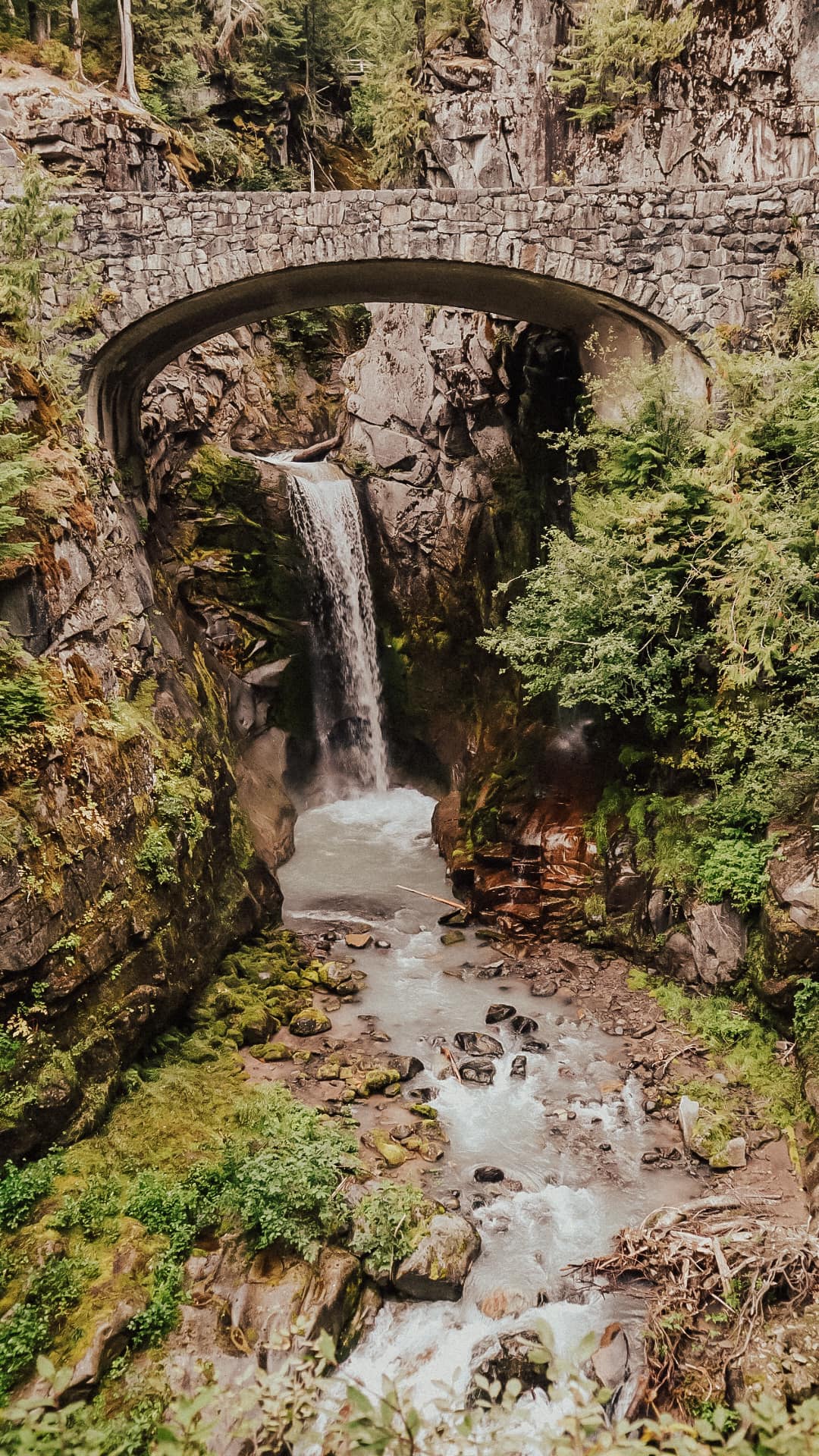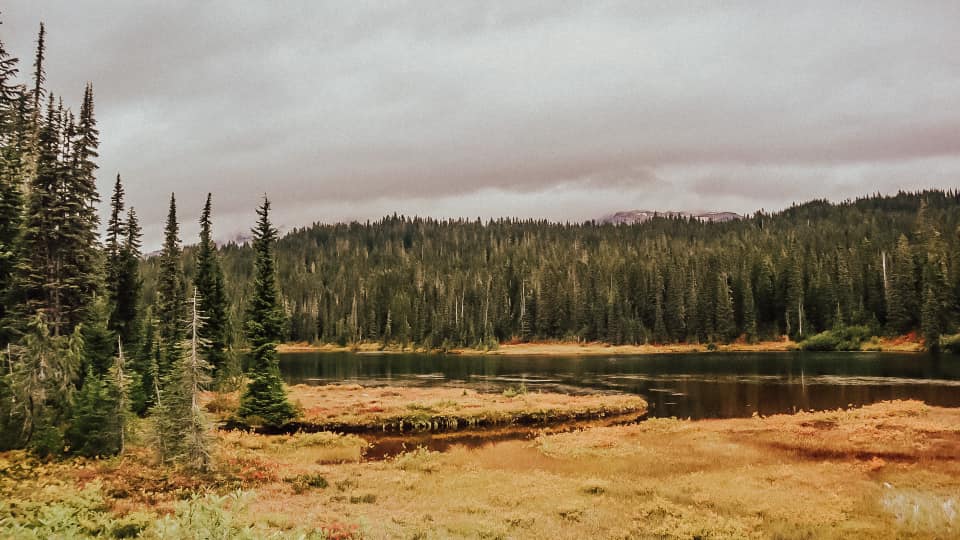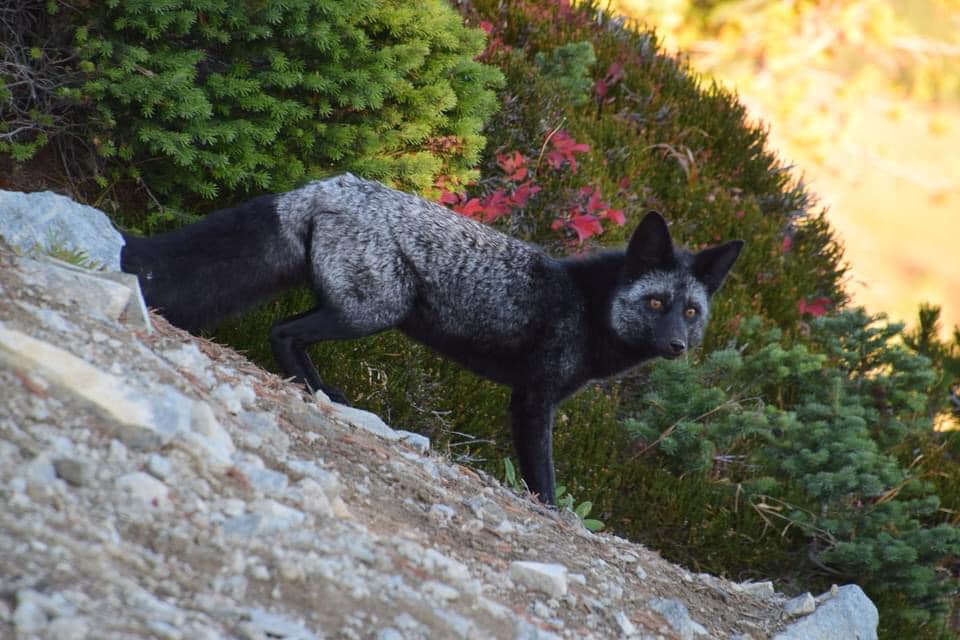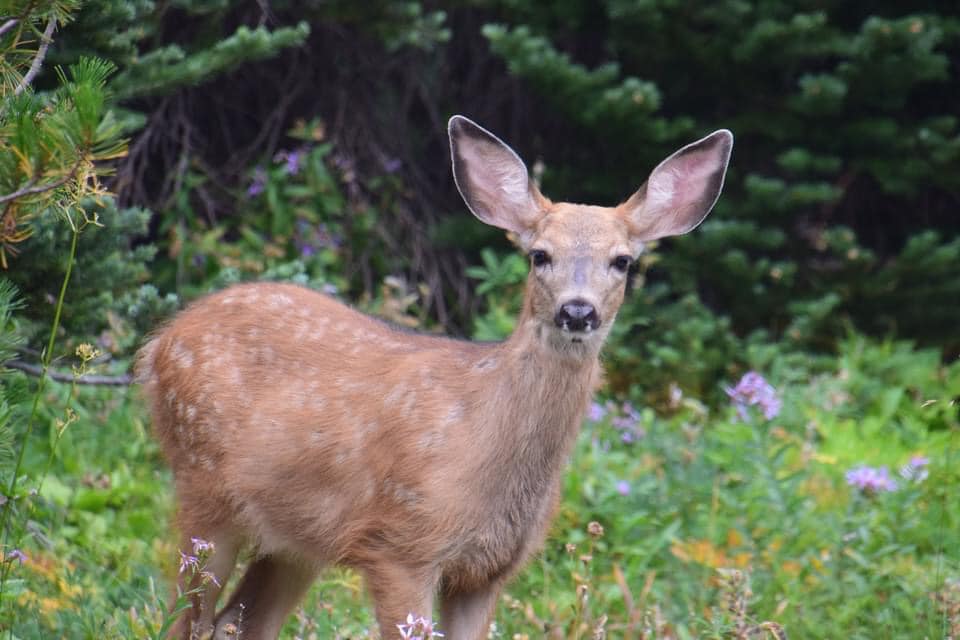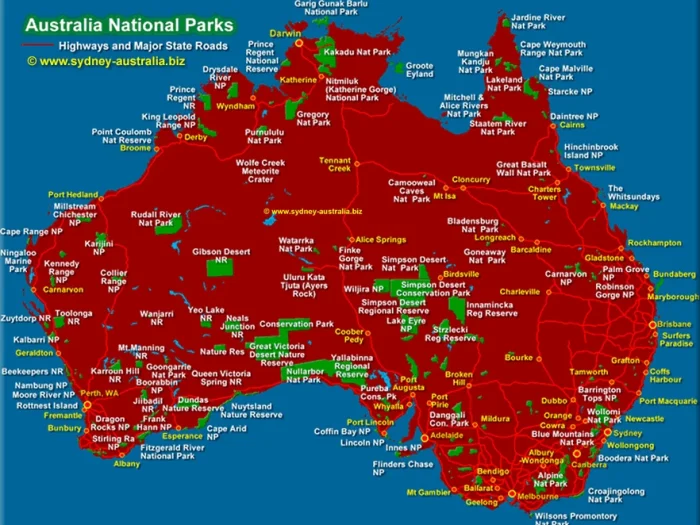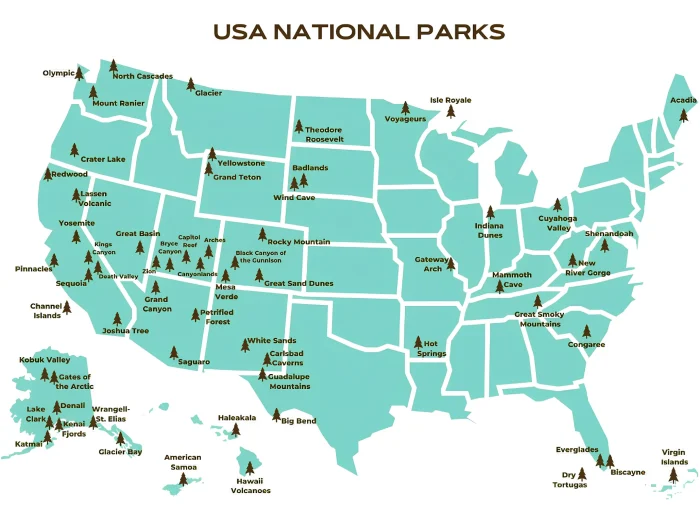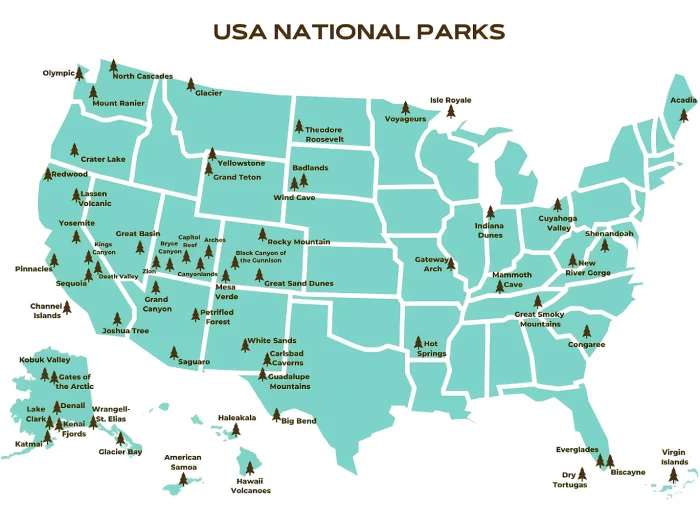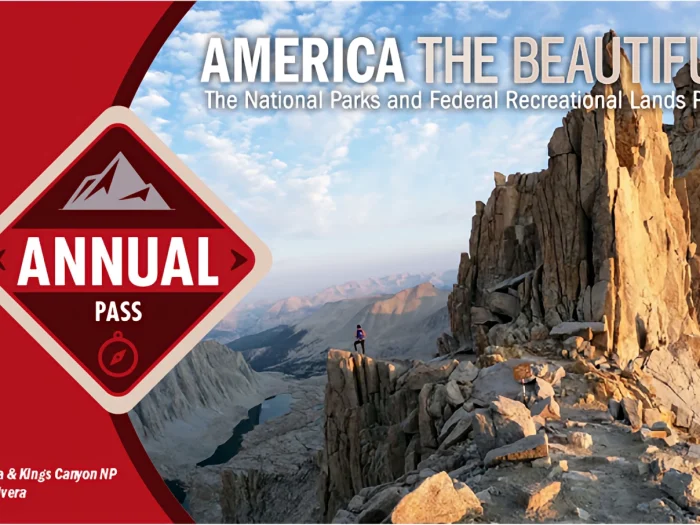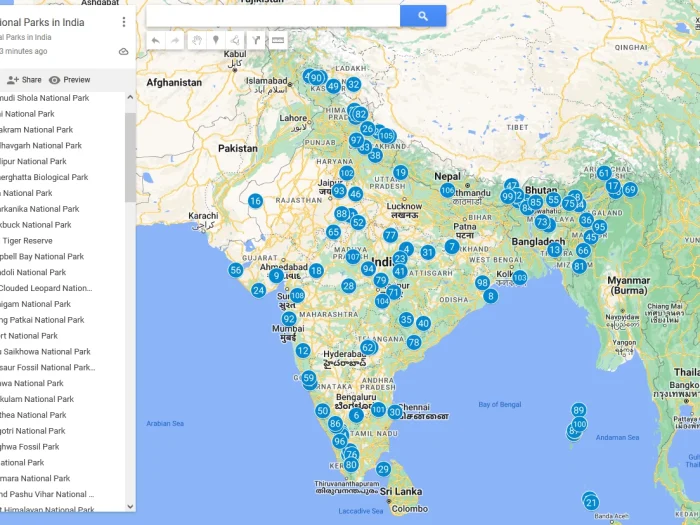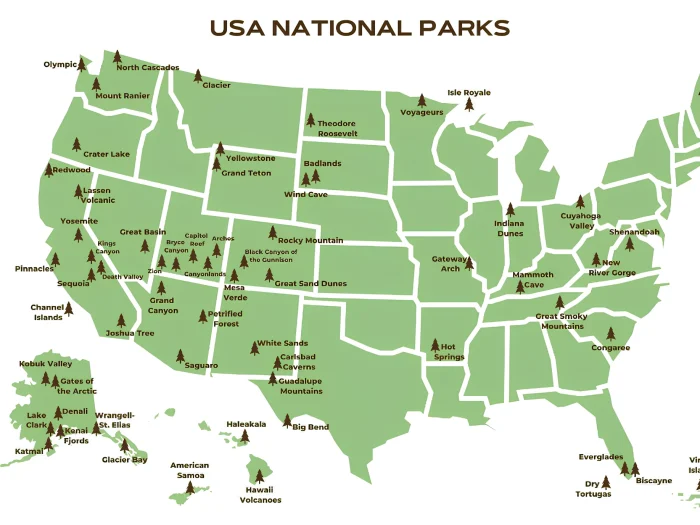Welcome to Mount Rainier National Park
Welcome to the Mount Rainier National Park Information Page
Here you will find all you need to know about the natural history of the park.
Learn about the geology, trees, mammals, birds, or other plants and wildlife of the area.
Mount Rainier National Park is located in west-central Washington State, USA, about 60 miles (97 kilometers) southeast of Seattle.
It lies in the Cascade Range and covers an area of approximately 369 square miles (956 square kilometers). The park is known for its centerpiece — Mount Rainier, a massive active stratovolcano standing 14,410 feet (4,392 meters) tall.
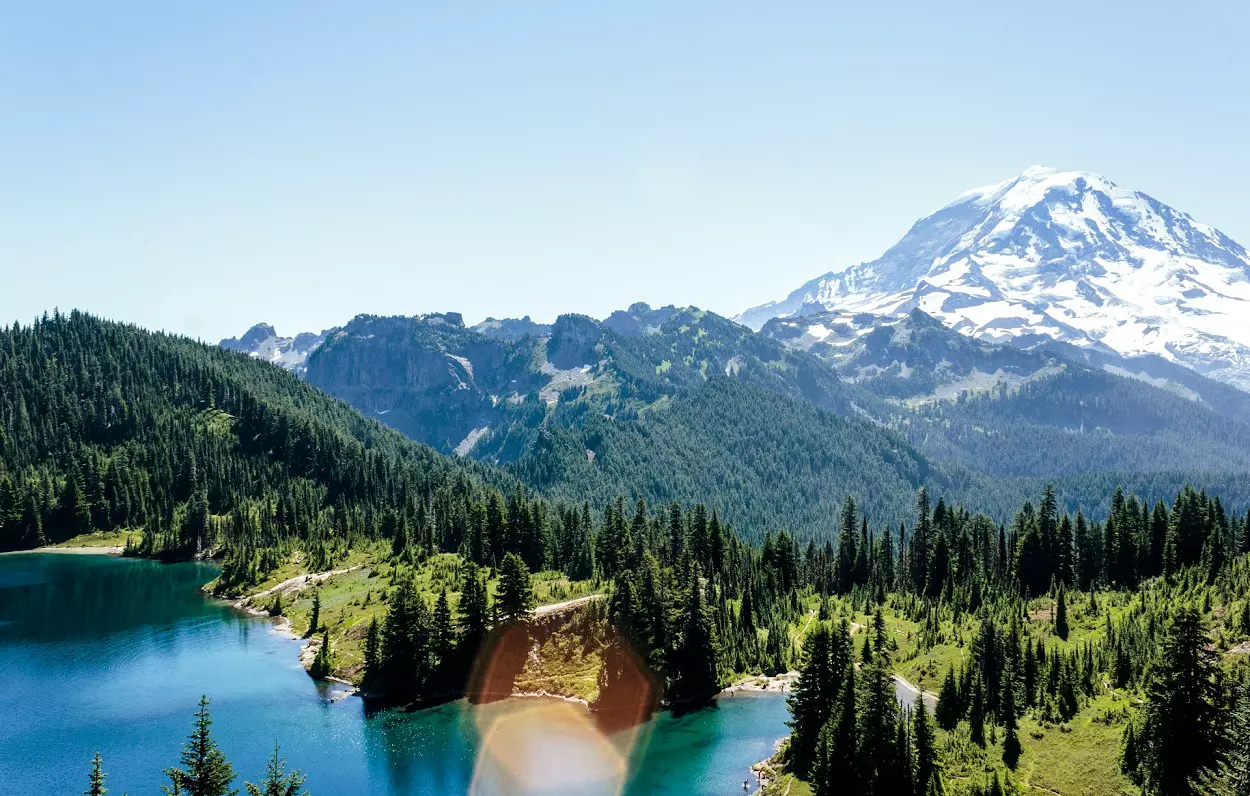
You can see images of Mount Rainier National Park here:

How to get to Mount Rainier National Park
By Car (Most Common Way)
Driving is the easiest and most flexible way to reach Mount Rainier.
From Seattle:
- Distance: ~90 miles (145 km)
- Drive time: About 2–2.5 hours
- Main route:
- Take I-5 South to WA-7 South toward Elbe.
- Enter the park via the Nisqually Entrance (SR-706) — open year-round.
From Portland, Oregon:
- Distance: ~140 miles (225 km)
- Drive time: About 3–3.5 hours
- Route: I-5 North → US-12 East → SR-7 North → SR-706 East to the Nisqually Entrance.
From Yakima or Eastern Washington:
- Take US-12 West and enter through the Stevens Canyon Entrance (seasonal, open summer–early fall).
🚐 By Tour or Shuttle
- There’s no regular public bus or national park shuttle, but seasonal tours operate from Seattle and Tacoma in summer.
- Companies like Evergreen Escapes, Customized Tours, or Tours Northwest offer day trips with transportation and guides.
✈️ By Air
- The closest major airport to Mount Rainier National Park is Seattle–Tacoma International Airport (SEA).
- From there, rent a car and drive about 2 hours to the park’s southwest entrance (Nisqually).
🚲 By Bicycle
- You can bike into the park, but roads are steep and narrow.
- Cyclists must follow vehicle traffic laws and pay the park entrance fee.
🏞️ Main Entrances
- Nisqually Entrance (SR-706): Open all year; access to Longmire and Paradise.
- White River Entrance (SR-410): Access to Sunrise (open summer only).
- Carbon River Entrance (SR-165): North side; access for hiking and biking.
- Stevens Canyon Entrance (SR-123): East side; seasonal access to Ohanapecosh.
Establishment the Mount Rainier National Park
Mount Rainier National Park was established on March 2, 1899, making it the fifth national park in the United States.
Establishment & History
- Date Established: March 2, 1899
- Signed Into Law By: President William McKinley
- Significance: It was the first national park created from a forest reserve and was established to protect the mountain’s glaciers, forests, and unique ecosystems.
- Original Purpose: To preserve the area’s natural beauty, scientific value, and recreational opportunities for future generations.
- Size at Establishment: About 369 square miles (956 km²) — the same as today.
Historical Importance
Mount Rainier became a national park thanks to early conservation efforts by scientists, climbers, and environmentalists like John Muir and Bailey Willis, who argued for its protection from logging and mining.
The park later inspired the National Park Service Organic Act (1916), which formalized the system for protecting U.S. national parks.
Size and Visitation of Mount Rainier National Park
The park encompasses 378 square miles (980 square kilometers, 235,612.5 acres). Elevation ranges from 1,880 at the Carbon River rain forest (NW corner of park) to 14,411 feet at the summit. Annual visitation exceeds 2 million visitors, with the majority of visitors coming to the park during the months of May through October.
Wildlife of Mount Rainier National Park
Overview
Mount Rainier National Park is home to diverse wildlife thanks to its wide range of elevations (1,600 to 14,410 ft) and ecosystems — from dense old-growth forests to alpine meadows and glaciers. Over 280 animal species have been recorded, including mammals, birds, reptiles, amphibians, and fish.
🐾 Mammals
You can find a variety of mammals throughout the park, including both large and small species:
Common mammals:
- Black bears – Often seen in summer meadows (especially around Sunrise and Paradise).
- Roosevelt elk – The largest animals in the park, often spotted in forested valleys.
- Black-tailed deer – Common along roadsides and trails.
- Mountain goats – Seen in alpine areas and rocky cliffs.
- Cougars (mountain lions) – Rarely seen but present.
- Coyotes – Active early in the morning or late in the day.
- Marmots & pikas – Beloved alpine residents; marmots are often seen near Paradise.
🐦 Birds
Mount Rainier is a haven for birdwatchers, with over 180 bird species recorded.
Notable birds include:
- Gray jays (Canada jays)
- Clark’s nutcracker
- Steller’s jay
- Ravens
- Townsend’s warbler
- American dipper (seen near mountain streams)
- Northern spotted owl (a threatened species found in old-growth forests)
- Peregrine falcons and golden eagles soaring over the high ridges
🦎 Reptiles & Amphibians
Though not abundant due to the cool climate, a few hardy species thrive here:
- Garter snakes
- Western toads
- Pacific tree frogs
- Rough-skinned newts
🐟 Fish
The park’s rivers and lakes support several native fish species:
- Cutthroat trout
- Rainbow trout
- Brook trout (introduced species)
Fishing is permitted in designated areas with proper regulations.
🐻 Wildlife Safety Tips
- Keep at least 50 yards (45 meters) away from wildlife — 100 yards (90 meters) for bears or large mammals.
- Never feed wild animals.
- Store food in bear-proof containers or in your vehicle.
- Drive slowly; animals often cross roads unexpectedly.
🌿 Fun Fact
Mount Rainier’s mascot-like animal, the hoary marmot, is so common and friendly that visitors often call it the “whistling marmot” — named for its loud warning calls across alpine meadows.
Visitors Guide
Basic Recommendations
I recommend that you plan your trip and the areas you would like to see and then go and relax and make a day of it. Go and see all that is in the area and enjoy it. You spend more quality time and learn and see more than you could ever imagine.
Mount Rainier National Park contains vast expanses of pristine old-growth forests, subalpine flower meadows, spectacular alpine scenery, and great opportunity for stimulating outdoor activities. Mount Rainier National Park is the fifth oldest national park in the United States. Mount Rainier has the greatest single-peak glacial system in the United States. Glaciers radiate from the summit and slopes of the 14,411 foot volcano.
Biking in Mount Rainier National Park
📍 Overview
Bicycling is allowed on all public roads within Mount Rainier National Park, but not on hiking trails or in wilderness areas. The park’s terrain is mountainous and challenging, offering cyclists a mix of scenic views, steep climbs, and thrilling descents.
Cycling here is best suited for experienced riders who are comfortable sharing narrow roads with vehicles and navigating elevation changes.
🛣️ Where You Can Bike
Allowed Areas:
- All paved and unpaved public roads open to motor vehicles.
- The Carbon River Trail (a former road now closed to vehicles) allows both bicycles and hikers — great for forest rides.
- Roads connecting key destinations such as Longmire, Paradise, Ohanapecosh, Sunrise, and White River.
Not Allowed:
- Hiking trails, wilderness routes, and meadows — to protect fragile ecosystems.
Camping in Mount Rainier National Park
📍 Overview
Camping in Mount Rainier National Park offers an incredible way to experience the mountain’s forests, rivers, and alpine views up close. Whether you prefer developed campgrounds, backcountry adventures, or wilderness solitude, there are options for all types of campers.
The park has three main campgrounds and numerous backcountry sites, managed by the National Park Service (NPS).
🏞️ Frontcountry Campgrounds
These developed campgrounds have restrooms, picnic tables, and fire rings but no RV hookups.
| Campground | Location | Elevation | Open Season | Notes |
|---|---|---|---|---|
| Cougar Rock | Near Paradise (SW side) | 3,180 ft | Late May – Late Sept | Closest to Paradise; reservations recommended. |
| Ohanapecosh | SE side near Stevens Canyon | 1,914 ft | Late May – Early Oct | Shaded forest campground by a river. Great for families. |
| White River | NE side near Sunrise | 4,400 ft | Late June – Late Sept | First-come, first-served; ideal for hikers. |
Reservations:
- Available at Recreation.gov for Cougar Rock & Ohanapecosh.
- White River is first-come, first-served only.
- 💵 Fee: $20 per night (subject to change).
Backcountry Camping
For adventurous visitors, backcountry camping lets you explore deeper into Mount Rainier’s wilderness.
- A Wilderness Permit is required for all overnight backcountry trips.
- You must camp at designated sites or zones.
- Campfires are not allowed in the backcountry.
- Bear canisters or proper food storage are required.
Popular backcountry areas:
- Wonderland Trail: A 93-mile loop encircling Mount Rainier — the park’s premier backpacking route.
- Indian Bar and Summerland: Scenic overnight destinations with glacier views and alpine meadows.
- Carbon River Area: Forested routes and fewer crowds.
Climbing Mount Rainier
📍 Overview
Mount Rainier (14,410 ft / 4,392 m) is the highest peak in Washington State and one of the most glaciated mountains in the contiguous United States. Climbing it is a major mountaineering challenge, requiring technical skills, proper equipment, and excellent physical conditioning.
Each year, 8,000–10,000 climbers attempt the summit, but only about 50% succeed due to weather, altitude, or difficulty.
🧭 Climbing Season
The main climbing season runs from late May through early September, when routes are most stable and daylight is long.
- May–June: Firmer snow and fewer crowds, but colder and more unpredictable weather.
- July–August: Peak season, warmer conditions, crevasse bridges still strong.
- September: Shorter days, more rock exposure, and increased hazards.
🧗♀️ Main Climbing Routes
Mount Rainier offers several established climbing routes — varying in length, technical difficulty, and popularity.
1. Disappointment Cleaver (DC) Route
- Starting Point: Paradise (5,400 ft) → Camp Muir (10,188 ft) → Summit
- Distance: ~9 miles one way
- Elevation Gain: ~9,000 ft
- Most Popular Route (used by 70% of climbers).
- Requires glacier travel, crevasse navigation, and use of crampons and ice axe.
2. Emmons Glacier Route
- Starting Point: White River Campground (4,400 ft) → Camp Schurman (9,460 ft) → Summit
- Longest Glacier Route in the Lower 48
- Less crowded than DC, but more physically demanding.
3. Kautz Glacier & Liberty Ridge Routes
- Advanced/Expert routes requiring steep ice climbing, route-finding, and technical protection.
- Only recommended for highly skilled climbers or guided expeditions.
Golden Access Passport
The Golden Access Passport is a free pass available to all permanent U.S. residents who are eligible to receive federal benefits based on disability, whether or not you are actually receiving them or not. This pass entitles the bearer, and immediate family or accompanying passengers in a private vehicle, to free admission to all U.S. National Parks, Monuments, Forests, and Historic Sites, as well as half price camping. Apply in person at any National Park Service or U.S. Forest Service area.
Food and Supplies
Limited camper supplies are available at the National Park Inn at Longmire, Sunrise Lodge, and in the communities surrounding the park.
Lodging
Two hotels are located within the park, managed by Mount Rainier Guest Services, The National Park Inn at Longmire, The Paradise Inn at Paradise.
Pet Information
Dogs, cats and other pets must be caged, on a leash or otherwise under physical restraint at all times. Pets may not be left unattended. Pets are not permitted in amphitheaters, buildings, on trails or in vegetated areas. They are permitted only in parking lots and roads open to vehicles.
Weather of Mount Rainier National Park
Mount Rainier, 14,411 feet high, is often said to create its own weather. It reaches into the atmosphere and interrupts the flow of moist maritime air masses from the Pacific Ocean. This results in great amounts of rain and snowfall. The heaviest precipitation occurs between October and early May. During the winter of 1971-1972, 1,122 inches of snow fell at the Paradise weather station on Mount Rainier (5,400 foot elevation), which was a world record. Average summer temperatures can range from the upper 30’s to mid-70’s. Warm clothing, rain gear, and sturdy footwear are recommended.
Tag : mount rainier national park , mount rainier national park washington , mount rainier national park visitor center , mount rainier national park weather , mount rainier national park map
40 FAQs about Mount Rainier National Park
General Information
1. Where is Mount Rainier National Park located?
Mount Rainier National Park is in west-central Washington State, about 60 miles southeast of Seattle.
2. How tall is Mount Rainier?
Mount Rainier stands 14,410 feet (4,392 meters) tall, making it the highest peak in Washington and the Cascade Range.
3. When was Mount Rainier National Park established?
It was established on March 2, 1899, making it the fifth national park in the United States.
4. Why is Mount Rainier significant?
Mount Rainier is an active stratovolcano and a prominent symbol of the Pacific Northwest, known for glaciers, wildflowers, and alpine beauty.
5. What is the best time of year to visit Mount Rainier National Park?
July to September offers the best weather, clear views, and blooming wildflowers.
6. How much does it cost to enter the park?
A private vehicle pass costs $30 and is valid for seven days. Annual and lifetime passes are also available.
7. What are the main entrances to Mount Rainier National Park?
The main entrances are Nisqually (southwest), White River (northeast), Carbon River (northwest), and Stevens Canyon (southeast).
8. How far is Mount Rainier from Seattle?
It’s about a 2-hour drive (roughly 90 miles) from Seattle, depending on traffic and route.
9. What are the park’s operating hours?
The park is open year-round, but access to certain areas may vary by season or weather.
10. Is Mount Rainier an active volcano?
Yes. Mount Rainier is an active volcano, though it has not erupted for over 500 years.
🚗 Getting There & Transportation
11. What is the easiest way to get to Mount Rainier National Park?
Driving is the easiest way, as public transport options are limited. Major access routes include SR 706, SR 123, and SR 410.
12. Are there shuttle services or public transportation to the park?
There are no regular public shuttles, but some tour companies offer seasonal trips from Seattle or Tacoma.
13. Can I drive around the entire park?
No. There’s no single road circling the entire park, but several scenic drives connect key areas.
14. Are roads open year-round?
Not all. The Nisqually Entrance is open year-round, while others close in winter due to snow.
15. Do I need tire chains in winter?
Yes, tire chains are required for all vehicles entering the park during winter months.
🥾 Hiking & Outdoor Activities
16. What are the most popular hikes in Mount Rainier National Park?
Popular hikes include Skyline Trail (Paradise), Naches Peak Loop, and Grove of the Patriarchs.
17. How difficult is the hike to the summit of Mount Rainier?
It’s a very challenging climb requiring technical skills, glacier travel, and a climbing permit.
18. Do I need a permit to climb Mount Rainier?
Yes, a Climbing Permit and Wilderness Permit are required for all summit attempts.
19. Are guided climbing tours available?
Yes, several authorized guide services lead summit expeditions, including RMI Expeditions and Alpine Ascents International.
20. What are some family-friendly or easy trails?
Try Myrtle Falls, Trail of the Shadows, or Sunrise Nature Trail for short, easy hikes.
21. Where can I see wildflowers in the park?
The best spots are Paradise, Sunrise, and Indian Henry’s Hunting Ground, usually in July–August.
22. Can I see wildlife in Mount Rainier National Park?
Yes. You might spot elk, marmots, black bears, mountain goats, and many bird species.
23. Are pets allowed on trails?
No, pets are not allowed on park trails or in wilderness areas, only in campgrounds and paved areas.
⛺ Camping & Lodging
24. Are there campgrounds in Mount Rainier National Park?
Yes, main campgrounds include Cougar Rock, Ohanapecosh, and White River.
25. Do I need a reservation for camping?
Yes, reservations are strongly recommended during summer; some sites fill up months in advance.
26. Are there hotels or lodges inside the park?
Yes. The National Park Inn (Longmire) and Paradise Inn (Paradise) offer rustic lodging.
27. Can I backcountry camp in Mount Rainier National Park?
Yes, with a Wilderness Permit, which must be obtained in advance or at ranger stations.
28. What permits are required for overnight backpacking?
A Wilderness Permit is required for all overnight stays outside developed campgrounds.
29. Are campfires allowed?
Yes, but only in designated fire rings at campgrounds; not allowed in backcountry zones.
🌸 Nature & Scenery
30. When is wildflower season at Mount Rainier?
Typically mid-July to mid-August, depending on snowmelt.
31. Where are the best viewpoints for photography?
Top spots include Reflection Lakes, Sunrise Point, Paradise, and Tipsoo Lake.
32. Can I see glaciers in the park?
Yes, Mount Rainier has 25 named glaciers, the most of any U.S. mountain outside Alaska.
33. What kind of wildlife might I encounter?
Common wildlife includes black bears, elk, marmots, deer, mountain goats, and various birds.
34. Are there waterfalls in Mount Rainier National Park?
Yes, notable ones include Narada Falls, Christine Falls, and Myrtle Falls.
⚠️ Safety & Regulations
35. Is it safe to visit Mount Rainier?
Yes, but visitors should be cautious of rapid weather changes, steep terrain, and wildlife.
36. What should I do if I encounter a bear or other wildlife?
Stay calm, keep your distance, make noise, and never feed or approach wildlife.
37. What are the weather conditions like on Mount Rainier?
Weather is unpredictable; it can change from sunny to snowy within hours, even in summer.
38. Are drones allowed in the park?
No, drones are prohibited throughout Mount Rainier National Park.
39. Is there cell service or Wi-Fi inside Mount Rainier National Park?
Cell service is very limited; some reception near Paradise or Sunrise, but don’t rely on it.
40. What should I pack for a visit to Mount Rainier?
Bring layers, rain gear, hiking boots, sunscreen, water, snacks, and a detailed map.
